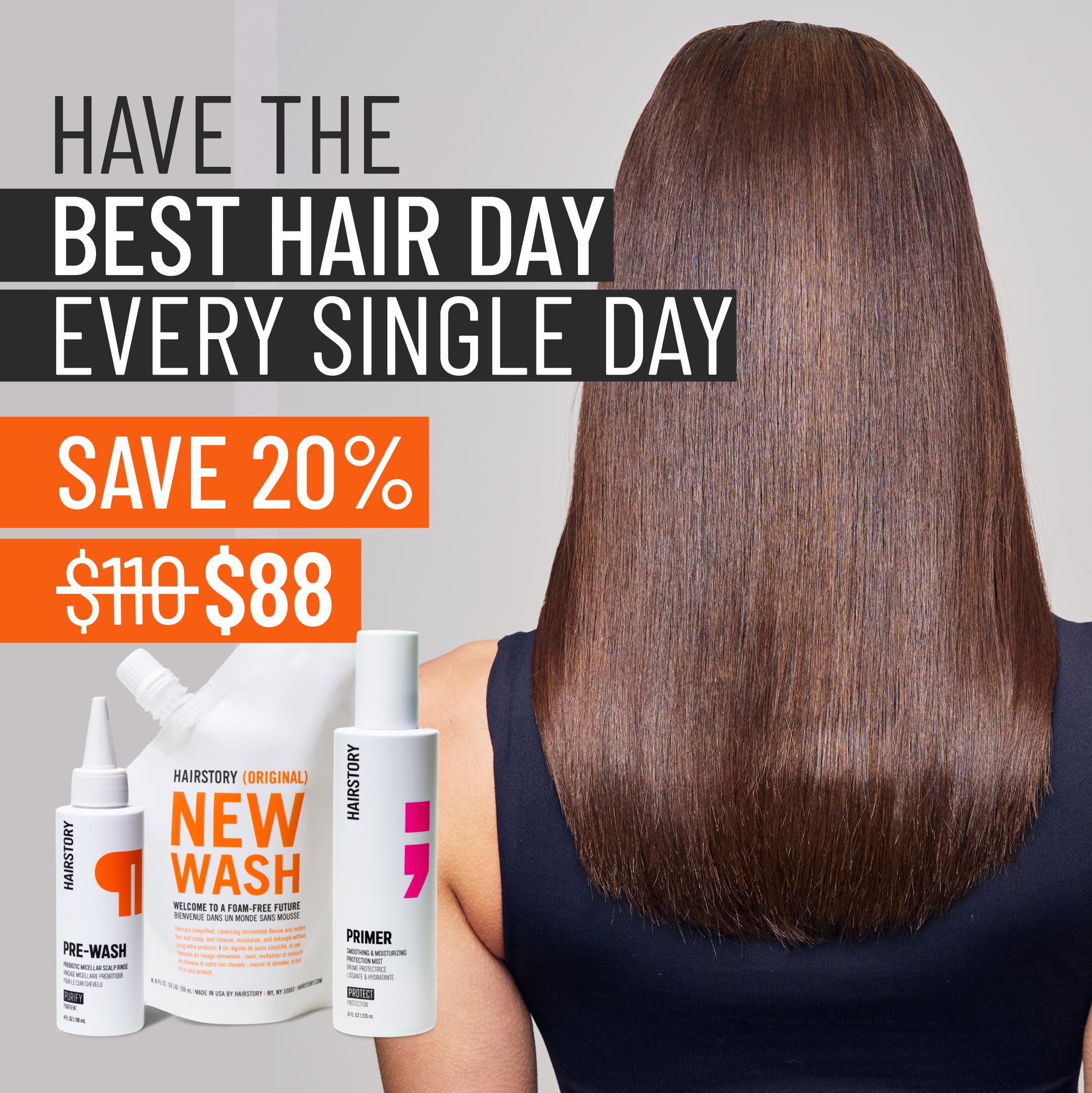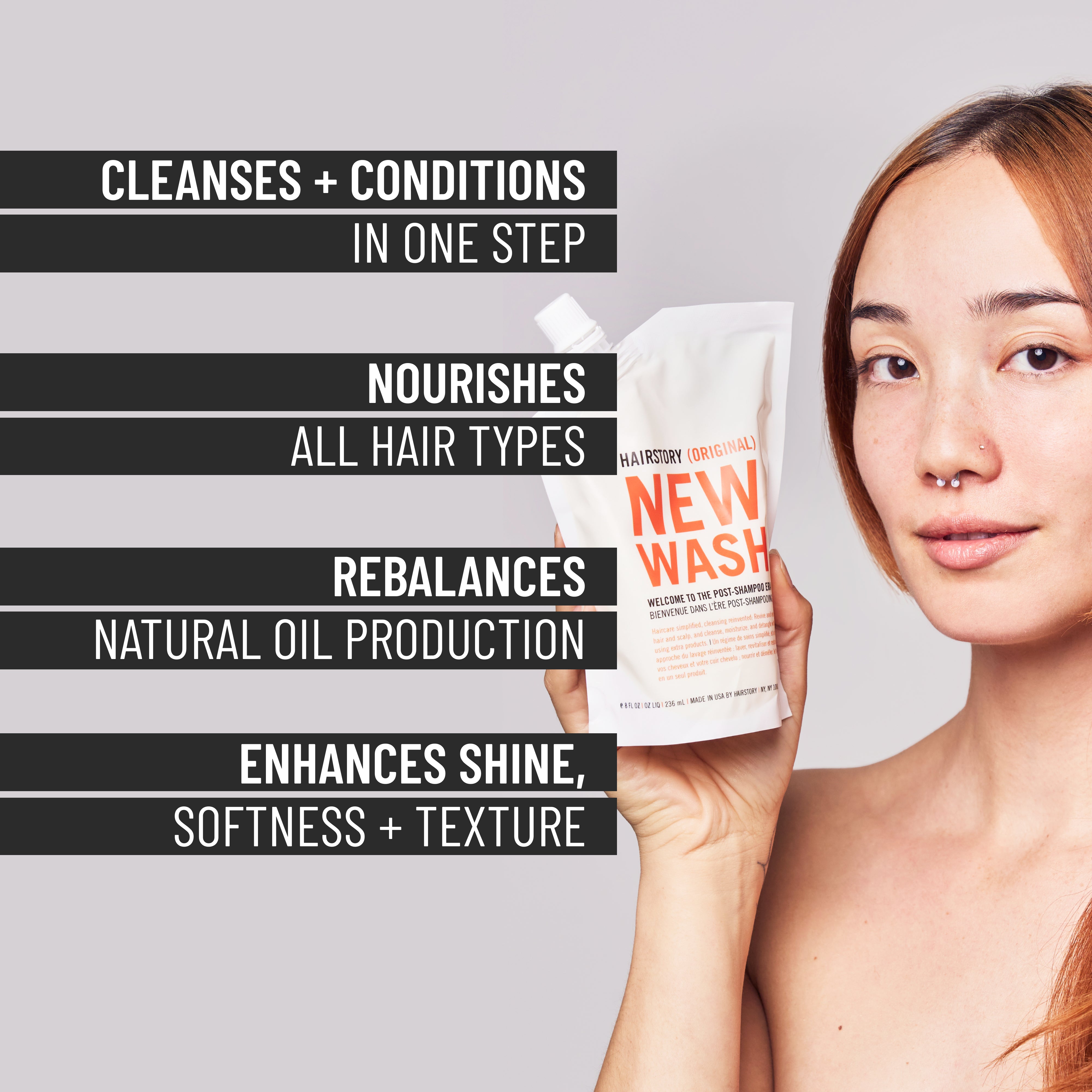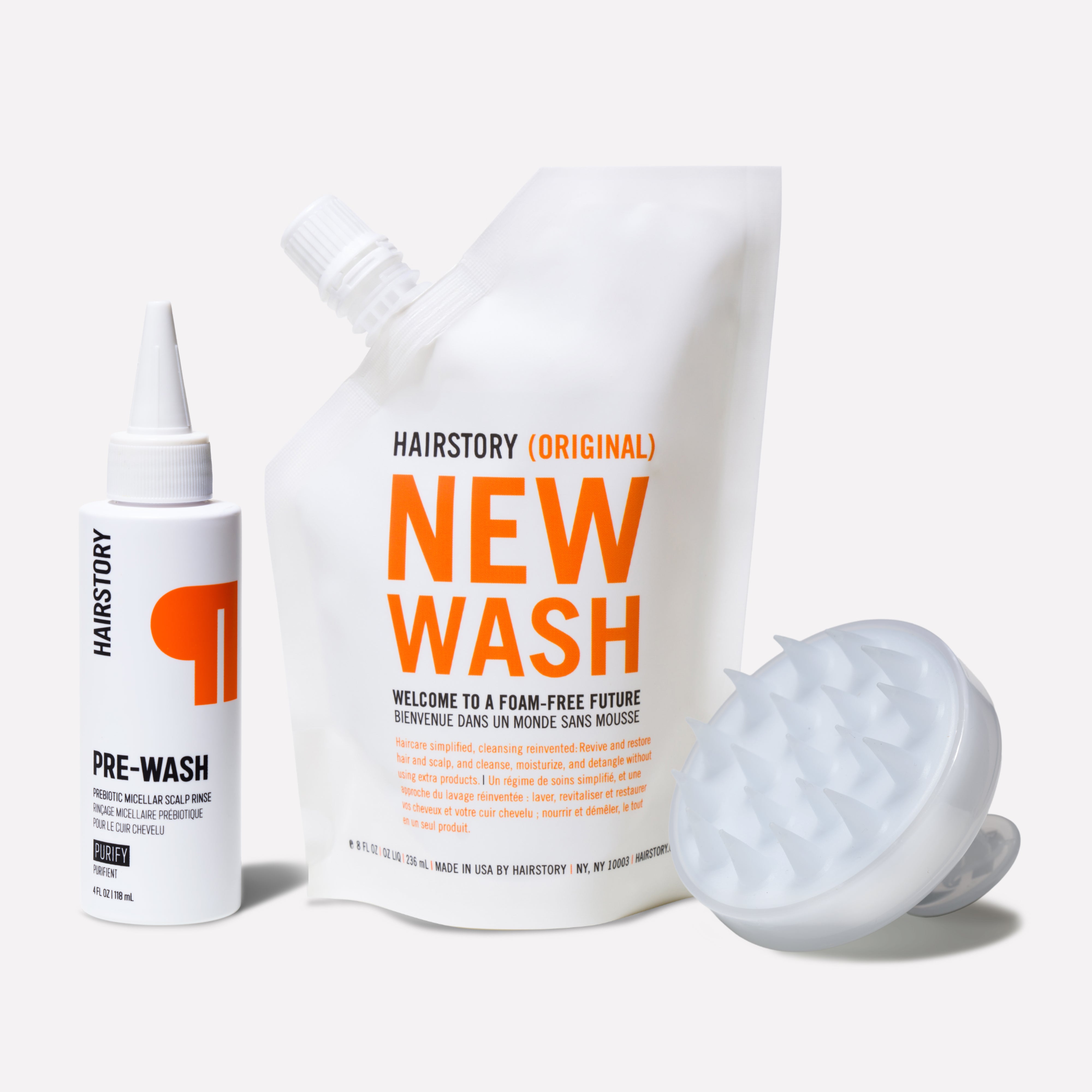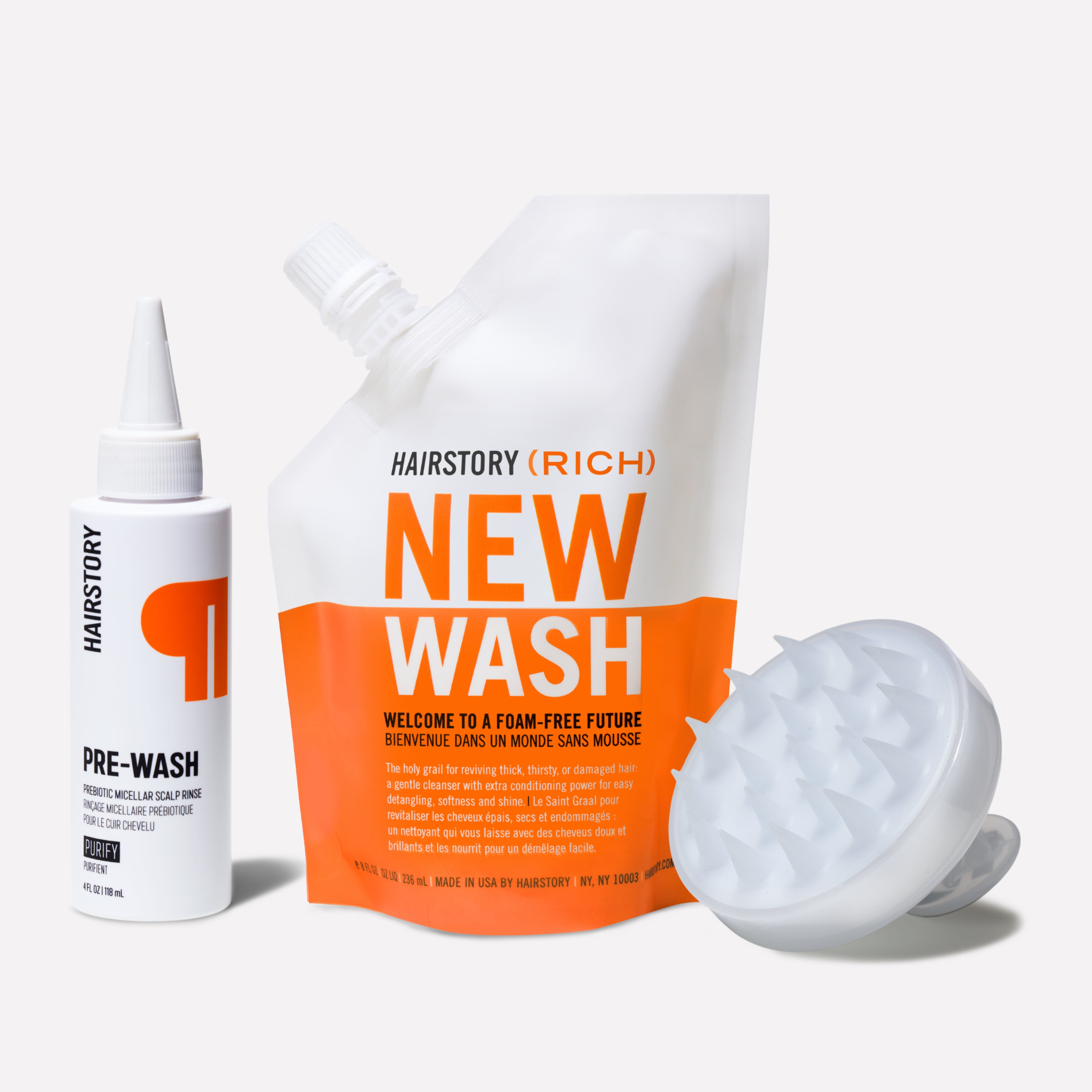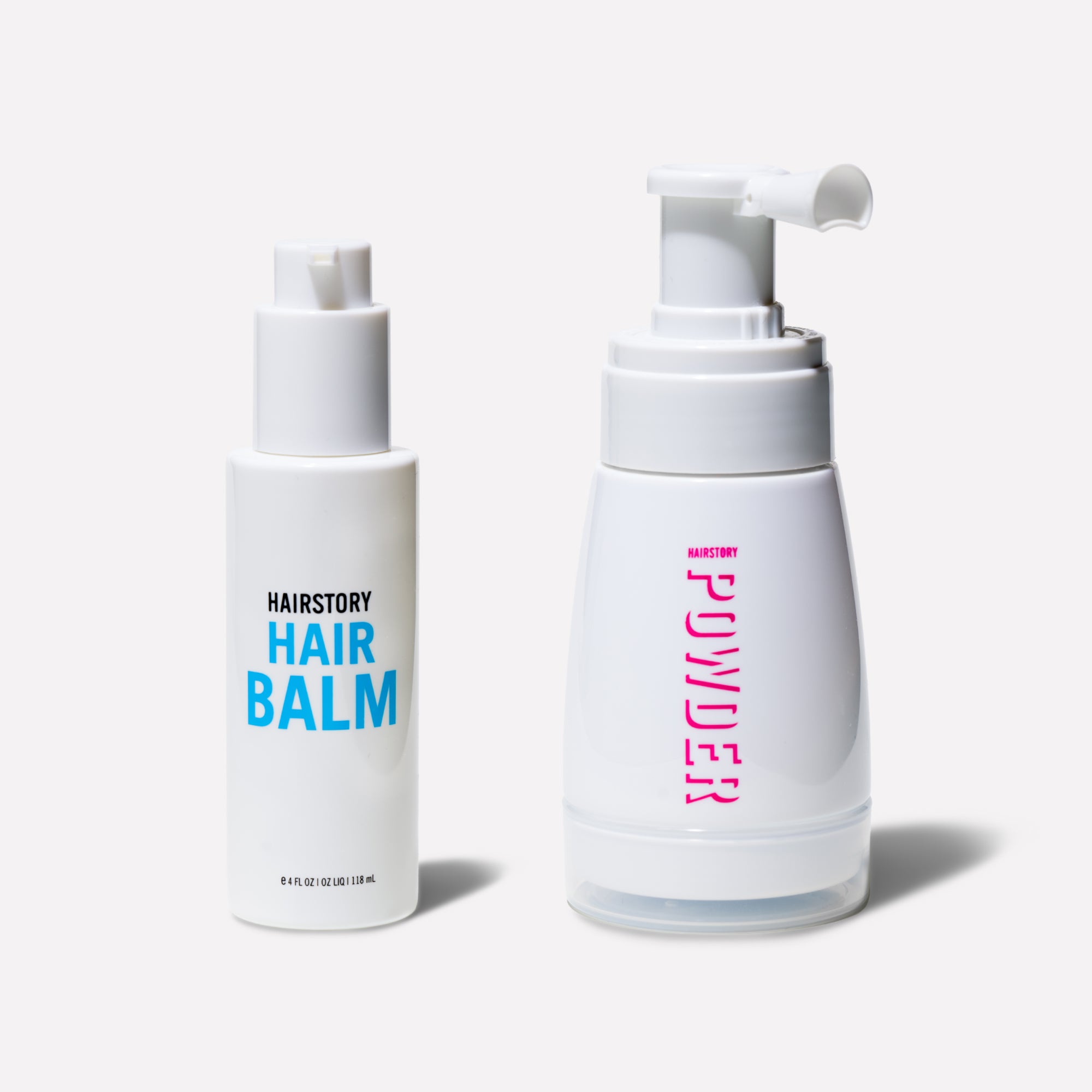April showers bring more than May flowers, and for some, June is no fun at all. August? Horrors! Curly, coily hair greets the arrival of humid weather with one thing in mind – all those showers and the frizz that comes with it.
Hell, all seasons have their challenges; even winter static wreaks havoc on hair that never wants to settle down and stay in line. Considering these inevitable environmental changes, it is quite likely that your hair cleansing regimen changes in response to the weather.
To give you the best possible advice, we enlisted hairdresser Jennifer Covington-Bowers, who cuts and colors hair for her private clientele when not running the gauntlet backstage at Fashion Weeks every season in New York, Paris, and Milan. She is a fierce advocate for racial inclusiveness in the beauty and fashion industries, and believes every hairdresser should have the facility to work with every hair type.
WHY DOES HAIR FRIZZ?
Frizz is the number one hair complaint among women, along with dryness, which goes hand-in-hand with frizz. To be clear, though, hair frizz is not only a challenge that comes with waves and curls. Straight hair can be frizzy too – and tightly coiled hair can be frizz free. Frizz can describe the baby hairs that the wind always stirs up even when you’re wearing the tightest of ponytails, or the strands of wavy or curly hair that go rogue, even when you want them to fall in line.
1. New hairs growing
When you see a halo of short hairs waving around on a windy day, it’s not necessarily a bad sign, and quite the opposite: this means that your scalp is doing what it normally does, shedding hairs that reach the end of their growth cycle – about 100 every day – creating space for new hairs to sprout in their place. Though tedious at times, the appearance of halo frizz is only natural.
2. Your curl type
If you’re a curly girl experiencing frizz, this may simply be because of your curl type. Some types naturally fall in a clearly defined, consistent curl pattern, and some just don’t. Your solution my lie in the way you handle and style your natural hair rather than focusing on repairing damage that leads to dryness. More on that below.
3. Dryness
“Frizz happens. And it usually happens when hair lacks moisture,” says Covington-Bowers. “Hair that is dry is also more porous, meaning that it absorbs moisture from wherever it can get it.” The outer layer of the hair follicle is called the cuticle and is made up of overlapping little shingles, or scales. Ideally, the cuticle lays flat and forms a tight seal to protect moisture inside. Closed cuticles provide a smooth surface, and reflect light making hair appear shiny. This is one of the most common low porosity hair characteristics. When damaged or dry, the cuticles open and allow water in and also to escape out. Here, the cuticles form a suede-like surface that appears matte.
4. The Weather
In humid weather, the cuticle absorbs water from the air and causes hair to swell up – and then frizz out. Moisture in the air penetrates the hair shaft and is absorbed into the cortex, or the long fibers at the core of each strand. These fibers are made of proteins and swell as they absorb moisture. Different proteins swell at different rates, and cause the hair shaft to twist and bend irregularly.
Anti-frizz serums, usually silicone-based, are popular because they create a barrier on the surface of the shaft that repels water, rather than absorbing it. There are other things you can do, however, to proactively achieve a better moisture balance for your natural curls in the first place.
5. Breakage
Hair breakage by rough handling also results in frizz. Breakage can happen when brushed or combed aggressively, especially when wet. Hair is usually stretched out of shape before it breaks, so what remains tends to spring outward and away from your head.
6. Controlling your frizz
Of course, nobody can control the weather (yet), but you can control how you treat your hair so that it is less frizz-prone by getting your head around these 9 frizz factors that help you know what to do and what not to do when going about your curly hair routine.
7. Shampoo
Let’s start at the beginning: Washing. You may have heard that traditional shampoo is problematic, and you heard correctly: detergent-based formulas are the most common cause of every curly girl’s frizzy fears. Frankly, the detergents in shampoo are the reason that conditioner was even invented: to moisturize overly clean hair and to restore some of its natural properties. Sulfates are the number-one enemy, and sulfate-free shampoo formulas are easy to find.
“You may have heard that traditional shampoo is problematic, and you heard correctly: detergent-based formulas are the most common cause of every curly girl’s frizzy fears.”
What’s not so easy, however, is identifying ingredients found in hair products that are sulfate-like – harsh detergents disguised in mild language. In time, hair care companies may retire shampoos made with sulfates. Meanwhile, beware of sodium dodecyl sulfate, lauryl sodium sulfate, and dodecyl sodium sulfate – while relatively safe in the doses that shampoo is made with, in raw form these are combustible, may cause a sore throat and cough if inhaled and nausea and vomiting if ingested, and require handling with protective gloves and goggles. Maybe, consider these factors before you wash your hair with such ingredients.
Detergent-free alternatives do exist and employ oil-based cleansing methods instead, similar to what most women use to wash their faces with. This is the reason why people with curly hair types opt for co-washing, (conditioner-only washing) to help maintain moisture, while others swear by the LOC method of layering a succession of products with various viscosities to both infuse and lock in moisture.
8. Water Temperature
Covington-Bowers can’t stress enough the dangers of overheating: “For me, the treatment of frizzy hair starts in the shower. Watch your water temperature!” A steaming hot shower may feel great, but does not do your hair or skin any favors. Hot water melts away your natural oil barrier that keeps your hair, scalp, and the rest of your body moisturized and smooth. Hot water can also open up the cuticles, so to fight frizzy curly hair, try dialing the temperature down to comfortably lukewarm, and consider a cool-to-cold rinse to close the cuticles – also recommended for color-treated hair. (It will help you save some on those fuel bills, too.)
9. Look, don’t touch
Handling your hair too much – either wet or dry – can disrupt the perfect curl and wave pattern you’re after. When you’re styling after washing, apply your balm, mousse or serum to wet hair to set up your curls for success, and then leave it alone until your hair is completely dry. Then, you can apply a final layer of serum or oil, depending on your regimen and how dry your hair is. Resist the urge to play with it throughout the day: “Fiddling with it creates frizz, so hands off,” Covington-Bowers commands.
10. Towel-drying
The classic towel-turban is a glamor hallmark, but your average terrycloth may be too coarse for curls with too much friction that roughs up the cuticle – exactly what you want to avoid. Keep in mind that wet hair is at its most fragile, so Instead of a towel, try a microfiber cloth or a well-worn t-shirt to blot and press your hair dry with – rather than rubbing and tousling hair, which is potentially tangling and will make a mess to comb through. Make smoothing moves your overall curly hair care goals. Your hair cuticle will thank you.
11. Alcohol
Products that contain alcohol can also dry out hair through evaporation, but not all alcohols should be on your deal breaker list! Fatty alcohols, in fact, are your friends and are highly moisturizing as opposed to “real” alcohol such as ethanol or propanol, which are both quite drying. Look for Cetyl, Cetearyl, and Stearyl Alcohols, all derived from vegetables and used in formulations to help soften both hair and scalp, and encourage the cuticles to lay flat and snug.
12. Hot tools
Curls usually respond best by letting them air-dry, but sometimes you may want sleeker looks that only heat styling will create. Since hot air and hot rollers will strip your hair of its natural moisture, take the proper precautions and use liquid protection before you plug in. Choose styling lotions designed with heat in mind – such as Dressed Up – to provide a buffer between your hair and your hot tools when creating your cool looks.
If you’re in the market for new irons, make sure you choose models that feature temperature settings, and keep them set well below 400 degrees. Try your best to work quickly and limit the amount of time you expose your hair to heat. Learn all you need to know about safer heat-stylinghere.
When using a blow dryer, make a habit of using the smoothing nozzle if provided, and always point the airflow in the growth direction, down the hair shaft and away from your scalp. Anything you can do to smooth the cuticle by working with the natural grain will help.
13. Brushing
If you’ve got curly hair and want instant volume, a brush is all you need to instantly create a gloriously frizzy halo. But if you’re not one to embrace such fabulous frizz – and retro trends from the 1980s where perms and crimps were all the rage don’t resonate – save the brush for styling your straighter looks.
Unless you’re doing a blow-out, brushing can disrupt the outer layer, undo any discernible curl pattern, and stretch your strands,leading to breakage if fragile. Instead, use your fingers to rake styling products through your hair – and remember: Don’t touch when you’re finished.
However, brushing can also have a smoothing result if your texture allows you to glide it through without snagging or tugging. Some with coily hair will find this impossible, but brushing is also a great way to coax your natural, conditioning oils away from your scalp and down toward the always drier ends. When you brush hair when dry, be gentle.
14. Your Pillowcase
If you’re sleeping on cotton and waking up frizzy, it could be time to try a silk pillowcase. Silk will absorb less of your natural oil and reduce some of the friction that causes frizziness, especially if you’re a tosser and turner.
15. The Scarf
Another bedtime alternative is to sleep with your hair cradled in a silk scarf, occasionally adding some Hair Balm as an overnight moisture treatment. Sure, you’ll look like Lucille Ball in I Love Lucy, but just go with it.
While you’re at it, one of Covington-Bowers’ top tips is to wear a silk scarf underneath a wool cap or beanie in cooler months. It can help your ‘do stay as un-mussed as well.
16. Products
Styling products are great ways to keep hair looking smooth and moisturized, but choose the right ones for your hair type. When browsing among products, your next question may be “what type of hair do I have?” and “which specific products are more beneficial?” While a misting of hairspray may be enough to tame finer hair that frizzes, wilder waves and curls may fare best with creams or mousses that also moisturize. Hair Balm is a great option that acts like a leave-in conditioner – an important product category for those with curly hair to know their way around. Look for products that containglycerin, a great humectant, which means that it absorbs the extra moisture in the air to create a protective coating over strands.
In general, stay away from silicones. Silicone-based serums coat the hair shaft and give it the appearance of shine, but they don’t actually add moisture, “Plus,” cautions Covington-Bowers, “silicones can build up over time on your hair and make it dull and pretty lifeless.” The real danger is letting them build up on your scalp, clogging your follicles and resulting in compromised hair growth. Get the skinny on silicones here.
“In general, stay away from silicone-based serums that coat the hair shaft and give it the appearance of shine, but don’t actually add moisture.”
Pure oils can be effective frizz-fighters, too. Covington-Bowers loves the effect of olive oil as a salve for any type of dry hair. “It’s a good base oil to add other oils to as well,” she adds, “such as almond oil, amla oil, black castor oil or coconut oil, to help moisturize and condition dry ends.” Each has natural properties that penetrate hair strands to help repair and prevent additional hair damage. “Make sure you aren’t allergic first by doing a skin patch test and watch for a reaction like redness or itching,” Covington-Bowers cautions. “In fact, before you try any new product, test it first on a small section of hair to see how it responds.”
17. Haircuts
Covington-Bowers also stresses the importance of regular trims. “If you let your hair get to the point that you’re seeing split ends, left untrimmed these can travel up the hair strand and cause damage that makes frizz impossible to control,” she warns. Even if you’re attempting to grow out your hair, keep those vulnerable ends healthy along the way. Not even a hydration treatment for natural hair is a substitute for a routine trim.
IN CONCLUSION
All said, there are people who admire frizz as beautiful and romantically ethereal. Vogue Creative Director Grace Coddington has made it her trademark; Pre-Raphaelite painters in the 19th century were rapturous over a preferably redheaded penumbra. Publicity photos of the silent film star Mary Pickford were often backlit to emphasize her halo. Frizz was in! But we live in the times we live in, and how you feel about your hair is what counts. So if frizz just isn’t your thing, we hope you’ve found all you need to start feeling not quite so frizz-conscious – and far more curl-proud.


